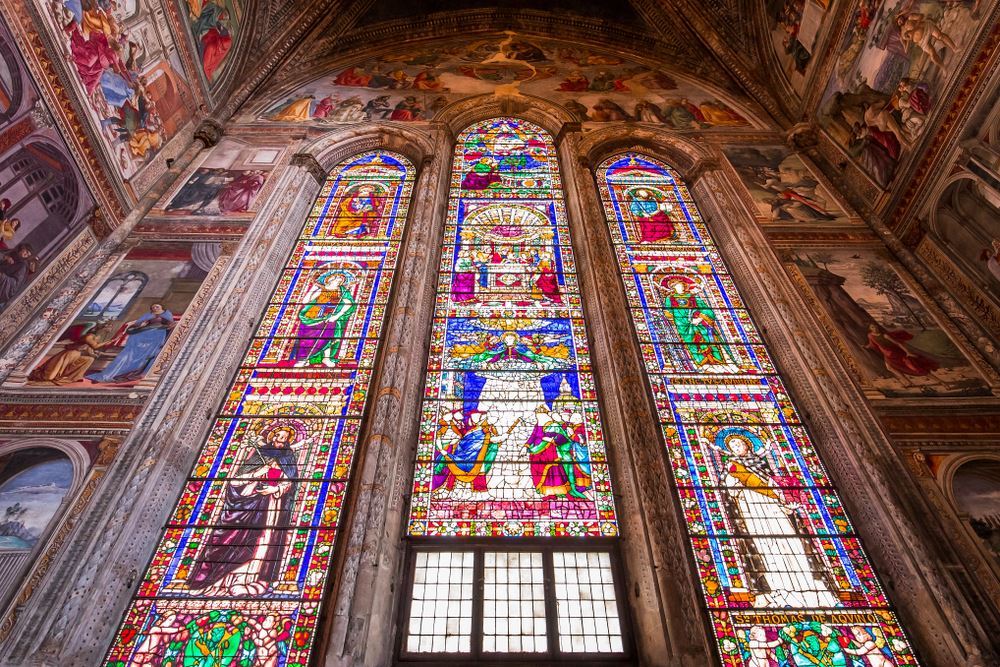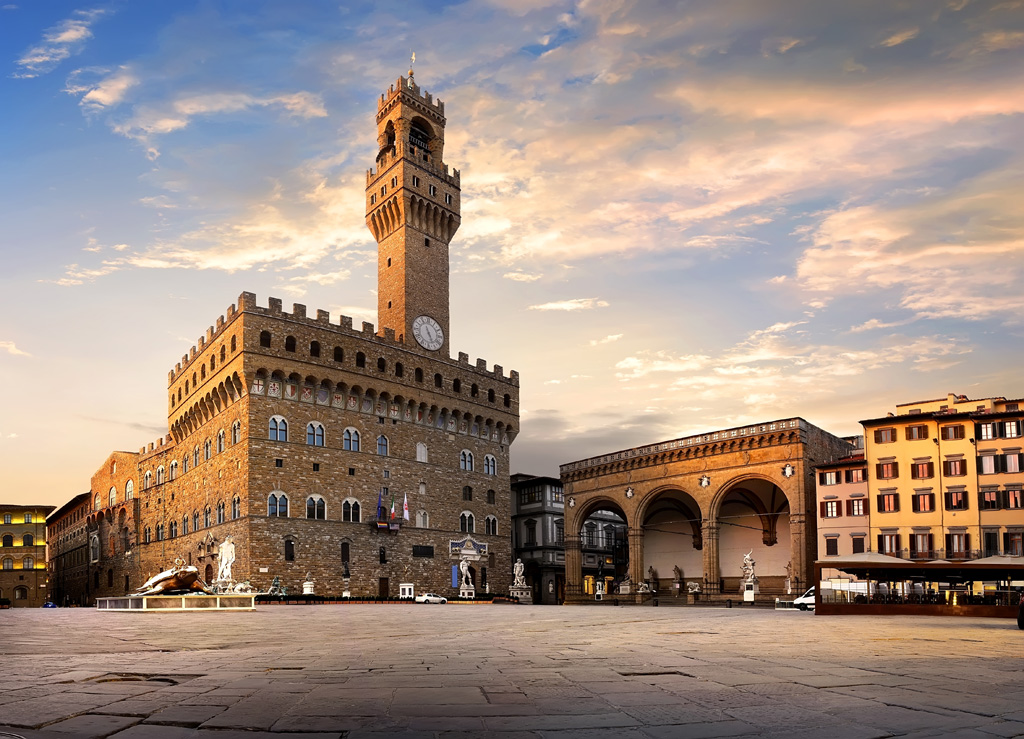
Florence: Top 10 small museums in Florence
Feb 2, 2022
Florence is a city where art was born and built. If this town is in your to-go list, you have probably heard about the biggest museums like: Accademia Gallery, Uffizi, Cupola del Brunelleschi, La Cupola del Duomo or Pitti Palace. Today we are going to talk about 10 museums in Florence that you might have never heard of but are definitely a must-visit.
Everyone who considers themselves a fan of art, as I do, has a Florence list of museums in their travel destination. Below here are some other museums of the town to add to your list.
1. SANTA MARIA NOVELLA
The Basilica of Santa Maria Novella is one of the most important churches in Florence and stands on the square of the same name. Santa Croce is a very ancient center of Franciscan culture and Santo Spirito housed the Augustinian order but Santa Maria Novella was for Florence the reference point for another important mendicant order, the Dominicans.

2. MUSEO DI PALAZZO VECCHIO
Palazzo Vecchio or The Old Palace is the symbolic monument of the city and it has been the seat of its government for over seven centuries. This palace brings extraordinary testimonies of all the phases of the history and art of Florence.
From the remains of the Roman theater preserved in the subsoil, one passes to the sumptuous rooms of the monumental quarters decorated by famous artists of the fifteenth and sixteenth centuries, to finally reach the spectacular panoramic views of the walkway and the tower.
Among the masterpieces in the building, the Judith by Donatello, the paintings by Bronzino in the Chapel of Eleonora and the Genius of Victory by Michelangelo.

3. CAPPELLE MEDICEE
Cappelle Medicee are two structures that are found inside the Basilica of San Lorenzo in Florence and were built as extensions to Brunelleschi’s 15th-century church to celebrate the Medici family, which were patrons of the church and Grand Dukes of Tuscany.

4. CAPPELLA BRANCACCI
The Brancacci Chapel is located in the transept of the Basilica del Carmine, founded in the 13th century by the Carmelite friars who settled in Florence.
It is the chapel of the Santa Maria del Carmine Church and it is also called the “Sistine Chapel of the early Renaissance” for its painting cycle, it is considered among the most famous and influential of the period.
The construction of the chapel was authorized by Felice Brancacci and begun in 1422. The paintings were executed between the years 1425 to 1427. Public access is actually gained via the neighboring convent, designed by Brunelleschi.

5. MUSEO DEL NOVECENTO
The Novecento Museum is located in Florence, inside the ancient Spedale delle Leopoldine in Piazza Santa Maria Novella. It is dedicated to 20th-century Italian art and offers a selection of about 300 works distributed in 15 environments. It was inaugurated on 24 June 2014.
Opened on 24 June 2014, the Novecento Museum is dedicated to the art of the twentieth century and proposes a selection of works from the civic collections, which illustrate the Italian art of the first half of the twentieth century. Alberto Della Ragione collection, donated to the city of Florence in the aftermath of the 1966 flood, embellished with works by Giorgio De Chirico, Filippo De Pisis, Gino Severini, Giorgio Morandi, Mario Mafai, Renato Guttuso, Felice Casorati and others.
The itinerary is completed with the legacy Ottone Rosai, received by the Municipality of Florence in 1963 at the behest of the widow Francesca Fei and her brother Oreste.
6. MUSEO STEFANO BARDINI
The Bardini Museum, located at Via de' Renai corner of Piazza de’ Mozzi in the district Oltrarno in Florence, is one of the richest “minor museums” of the city.
The museum, which has access to Via dei Renai 37 (and exit in the historic entrance of Piazza dei Mozzi 1), constitutes the testamentary bequest of the antiquarian Stefano Bardini ( 1836 – 1922 ) to the Municipality of Florence.

7. OPIFICIO DELLE PIETRE DURE
The Opificio delle Pietre Dure is based in Florence, Via Degli Alfani, 78 and is a central institution dependent on the Directorate-General for Education and Research of the Ministry of Cultural Heritage and Activities. The Opificio’s operational and research activity is carried out in the field of restoration, maintenance of works of art and restoration teaching. The diploma issued by the Opificio is equivalent to a master’s degree.
The Opificio is, together with the Higher Institute for Conservation and Restoration, one of the most important and renowned institutions in the field of restoration, not only at the national level but also internationally.

8. MUSEO ARCHEOLOGICO NAZIONALE
The museum collects the best of the excavations of all of Tuscany, but also finds from Lazio and Umbria, with very important Etruscan and Roman finds, and collections related to other civilizations, such as an important Egyptian section and one of Greek vases, many of which were found in Etruscan tombs, bearing witness to the numerous trade exchanges in the Mediterranean.

9. PALAZZO DAVANZATI
Inside it houses the Museum of the Ancient Florentine House. The palace is a fine example of Florentine residential area of the ‘300 architecture, built in the middle of the century by Davizzi family, wealthy merchants of the art of Calimala (or merchant); it was later sold in 1516 to the Bartolini family, wealthy members of ‘ Arte del Cambio , and finally in 1578 to Bernardo Davanzati , an equally rich merchant, as well as an important Italian economist, agronomist, scholar and historian. It was he who had the family coat of arms affixed on the facade and also had the Altana (loggia terrace) built on the third floor, instead of the original crenellation typical of medieval tower houses.

10. MUSEO DI SAN MARCO
The San Marco Museum is a state museum, part of the Tuscan museum complex; it is located in the monumental part of an ancient Dominican convent located in Piazza San Marco in Florence.
The fame of the museum, whose architecture is a Renaissance masterpiece, is mainly due to the presence of works by Beato Angelico, present in many rooms of the convent.
One wing is dedicated to the school of San Marco ( Fra ‘ Bartolomeo, Mariotto Albertinelli and their students), who also lived and worked here, while another houses the lapidary and the remains of buildings demolished in the period of the restoration of Florence as Italy's capital.


 Spanish
Spanish French
French Chinese
Chinese